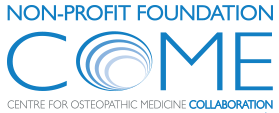A long COVID patient and their experience of osteopathic care: A case report
| By Patrick van Dun | 0 Comments
Long COVID is an emerging syndrome that is poorly understood in terms of aetiology, symptom picture, treatment and prognosis. This case report contributes a twelve-month history of a female patient’s experience of Long COVID and her motivation for, experience of and response to osteopathic care. The decision to write a case report was made retrospectively, with […]
Continue reading...






